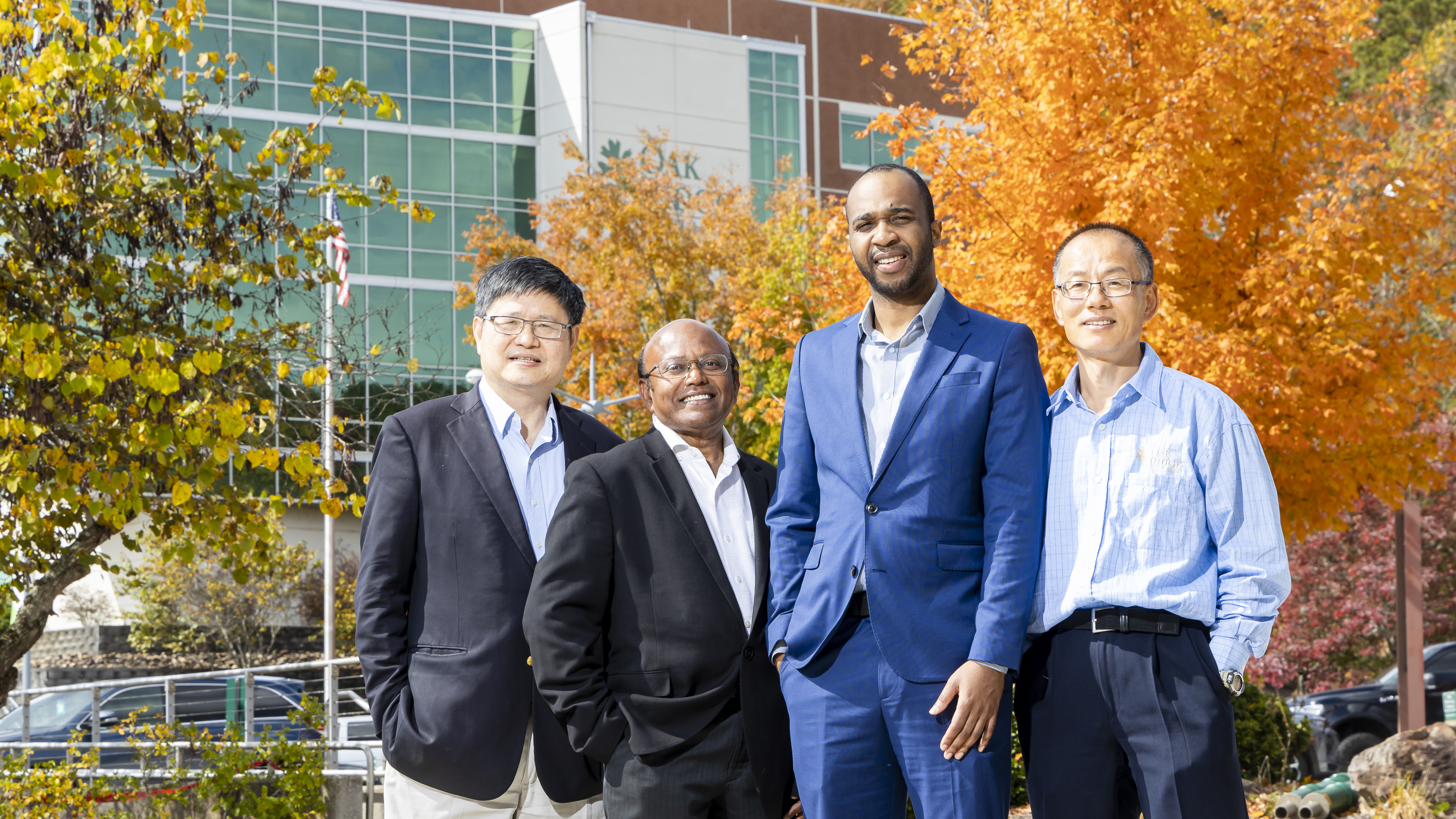Marc-Antoni Racing has licensed a collection of patented energy storage technologies developed at the Department of Energy’s Oak Ridge National Laboratory. The technologies focus on components that enable fast-charging, energy-dense batteries for electric and hybrid vehicles and grid storage.
The New England-based company is exploring ways to move the racing industry away from fossil fuels while maintaining the dynamic driving experience loved by motor sports enthusiasts.
The licensed ORNL patents for battery components — anode, cathode and electrolyte solution — are based on discoveries from ORNL’s Sheng Dai, Xiao-Guang Sun, Parans Paranthaman, Gabriel Veith and Craig Bridges. The members of this accomplished team are Battelle Distinguished Inventors, corporate fellows and distinguished staff scientists in chemical and materials science. They have received numerous accolades, including R&D 100 Awards.
Through new combinations of materials and design, the team has discovered components that break the barrier to fast-charging, power-dense lithium-ion batteries for electric vehicles. Additionally, the components meet a key DOE goal of reducing vehicle battery charging time to under 15 minutes, which gets EV charging closer to the time needed to refuel a gas-powered vehicle. Charging time is a major obstacle to the widespread adoption of EV technology needed to achieve the nation’s goal of net-zero carbon emissions by 2050.

For Dai and the scientific team, who have worked to advance energy technology for decades, interest from a racing company was an unexpected and welcomed development.
“Our research started at the fundamental level — I had no idea at that time that this could lead to something useful for racing,” Dai said. “Our previous research was focused on solving the problem of long charging for cell phone batteries. Batteries degrade and lose capacity to hold power. We wanted to understand the parasitic reaction mechanisms that degrade the battery.
“There is a lot of serendipity in discovery — we never quite know where it could go.”
Paranthaman led the research to develop a cathode component that better maintains function as it ages. “We’ve been working toward this technology for the last several years,” he said. “The coating we developed could reduce degradation and improve the stability of battery cathode materials over time. This could potentially improve the shelf life of the battery.”
Marc-Antoni Racing was founded by Ricardo Marc-Antoni Duncanson, who fell in love with racing by tinkering in the garage of a family member who raced cars. After an extensive career with Audi, Duncanson formed his own company in 2017 as the electric vehicle industry was beginning to grow. Currently based in Connecticut, Duncanson plans to relocate his operations to Tennessee.
With a well-established automotive manufacturing ecosystem and a growing industry centered on batteries for electric vehicles, Tennessee provides advantages to an EV-focused entrepreneur.
“Tennessee is a great place to do what we’re doing — motorsports and high-performance cars. There’s a rich motorsports history and infrastructure in the region,” Duncanson said. He is exploring further work with ORNL through RevV, a voucher program for Tennessee companies funded by the state of Tennessee and operated by the University of Tennessee and ORNL.
“Marc-Antoni Racing provides an exciting opportunity to test our technologies, de-risking further commercialization efforts to develop this technology for a range of industries,” said Susan Hubbard, ORNL’s deputy for science and technology. “In relocating to the Oak Ridge Corridor, Ric will be joining a robust entrepreneurial ecosystem focused on clean energy technology that is supported and strengthened by ORNL’s expertise and facilities.”
Duncanson expects that any improvements made to racing vehicles will quickly be adopted by the wider automotive industry, facilitated by exposure to the many high-tech companies working in racing.


